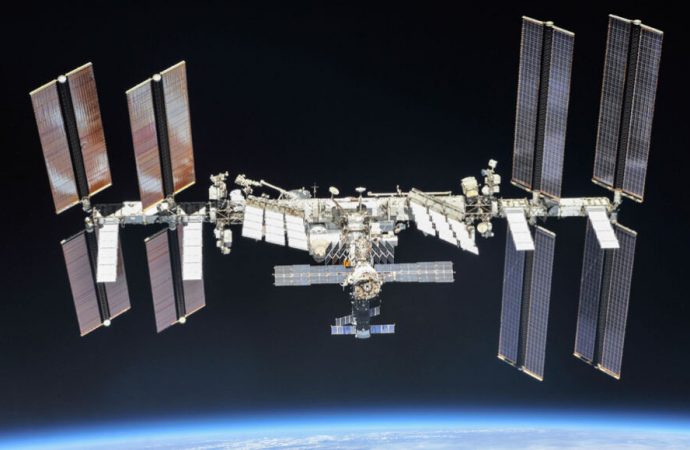Dead outer microbes protect inner ones in clumps attached to the International Space Station
Source: Science News
Outer space is not friendly to life. Extreme temperatures, low pressure and radiation can quickly degrade cell membranes, destroy DNA and kill any life-forms that somehow find themselves in the void.
But by banding together, some bacteria can withstand that harsh environment, shielded from the extremes of space by the group’s outer layers. Microbes huddled in the heart of balls of Deinococcus bacteria as thin as five sheets of paper have survived on the exterior of the International Space Station for three years, researchers report August 26 in Frontiers in Microbiology. Such microbial arks might be able to drift among planets, spreading life through the universe, a concept known as panspermia.
Previous research found that microbes can survive in space when embedded within artificial meteorites. But this is the first study to show that microbes can survive this long unprotected, says Margaret Cramm, a microbiologist at the University of Calgary in Canada who wasn’t involved in the study. “It suggests life can survive on its own in space as a group,” she says, providing another possible avenue for panspermia. It also adds weight to the worry that human space travel could unintentionally introduce life to other planets.
Akihiko Yamagishi, an astrobiologist at the Institute of Space and Astronautical Science in Tokyo, and his colleagues sent dried pellets of Deinococcus, radiation-resistant bacteria that thrive in extreme places such as the stratosphere, to space in 2015. The bacteria were stuffed into small wells in metal plates, which NASA astronaut Scott Kelly affixed to the exterior of the space station, and samples were sent back to Earth each year.
Back home, the researchers rehydrated the pellets, gave them bacteria food and waited for growth. After three years in space, bacteria in 100-micrometer-thick pellets didn’t make it. DNA analysis suggested the radiation had fried their genetic material. The outer layers of 500- and 1,000-micrometer-thick pellets were dead too, discolored by ultraviolet radiation and desiccation. But those dead cells shielded inner microbes from the hazards of space. Approximately 4 percent of the microbes in those larger pellets survived, Yamagishi says.
Extrapolating from survival data after one, two and three years of exposure, Yamagishi estimates that 1,000-micrometer pellets could survive eight years floating through space. “That’s enough time to potentially get to Mars,” he says. Some of the speediest, but less common, estimates of flight time of meteors between Earth and Mars suggest the trip could be made in a few months to years.
How exactly clumps of microbes could get expelled into space remains unclear. They might get kicked up by small meteorites, or ejected into space by thunderstorm-induced perturbations to Earth’s magnetic field, Yamagishi says. But such a trip could happen, he says. Someday, if microbial life is ever discovered on Mars, he hopes to look for evidence of such a cosmic journey. “That’s my ultimate dream.”
Source: Science News

































Leave a Comment
You must be logged in to post a comment.